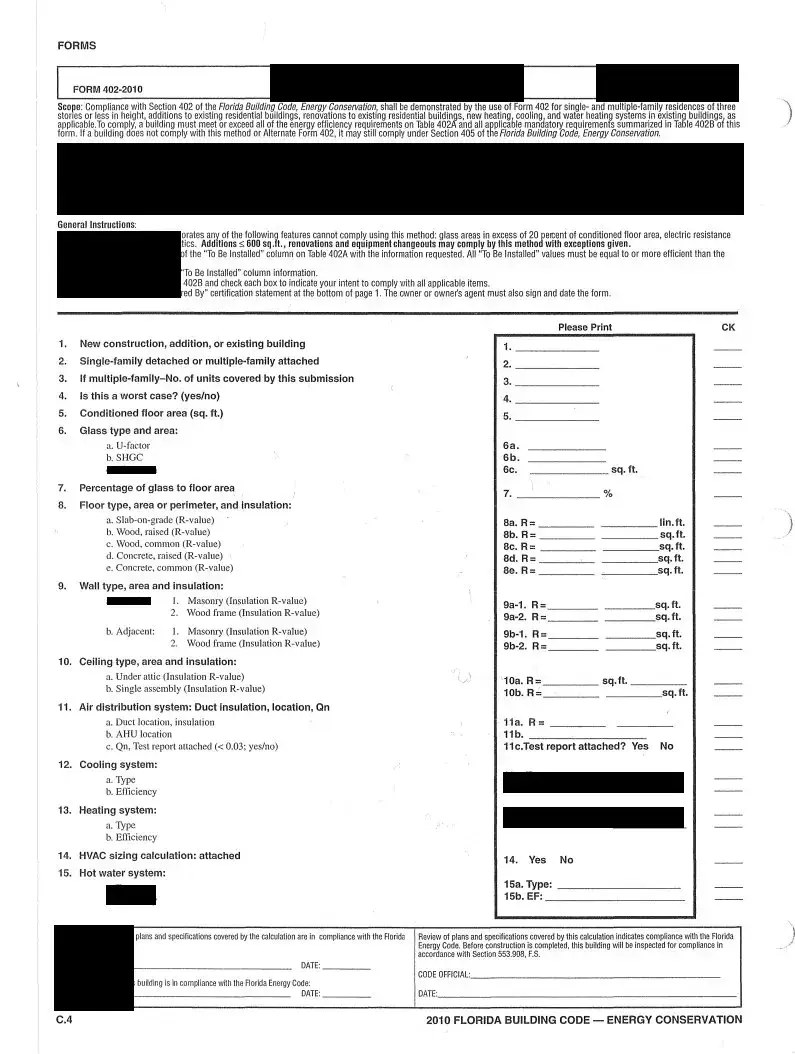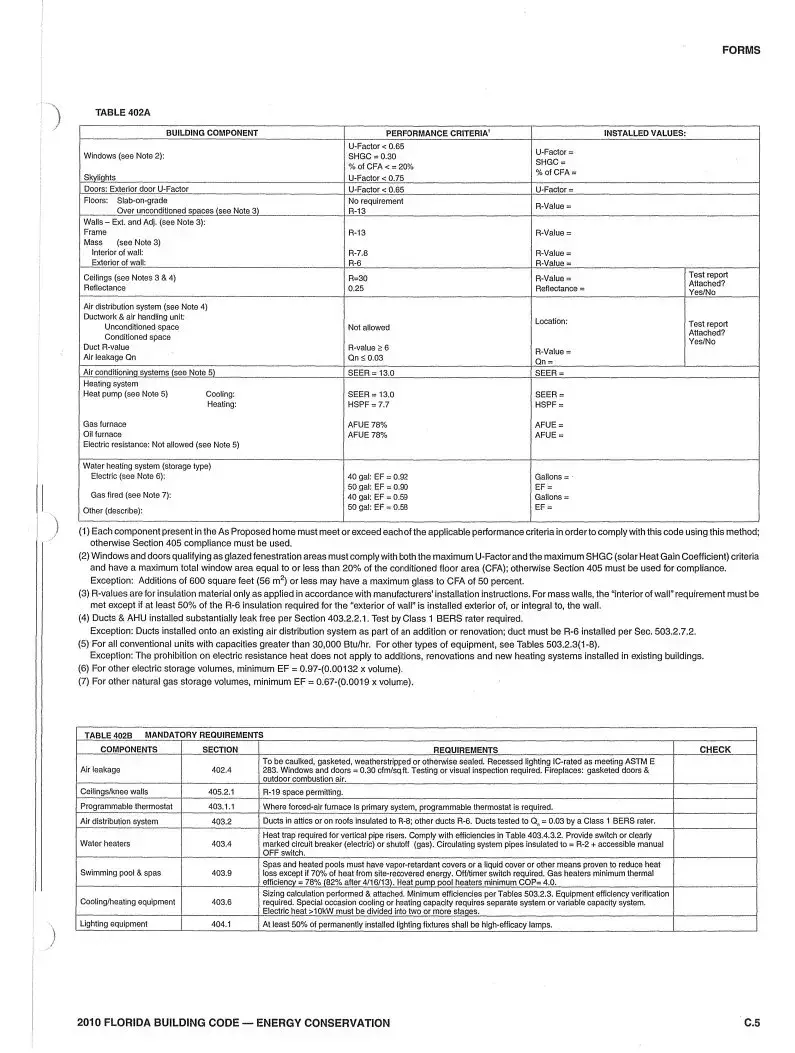What is the purpose of the Florida Energy Form?
The Florida Energy Form is designed to demonstrate compliance with Section 402 of the Florida Building Code, Energy Conservation. It is used for new constructions, additions, renovations, and the installation of new heating, cooling, and water heating systems in residential buildings of three stories or less. The form ensures that these projects meet or exceed specific energy efficiency requirements outlined in Table 402A and comply with the mandatory requirements summarized in Table 402B.
Who needs to fill out and sign the Florida Energy Form?
The form must be filled out by the person preparing the document, which could be the builder, contractor, or a certified energy rater. The "Prepared By" section at the bottom of page 1 should be completed, including a certification statement. Additionally, the property owner or the owner's authorized agent is required to sign and date the form, thereby affirming that all information provided is accurate and that the project will adhere to the stated energy efficiency criteria.
Can renovations and additions to existing buildings use the standard compliance method outlined in the Florida Energy Form?
Yes, renovations, as well as additions to existing residential buildings, can use the standard compliance method outlined in the Florida Energy Form with certain exceptions. For example, additions of 600 square feet or less have specific criteria they can meet for compliance. The form provides flexibility for smaller projects to comply with energy conservation requirements without needing extensive modifications.
What happens if a building cannot comply with the requirements on the Florida Energy Form?
If a building project cannot comply with the requirements listed on the Florida Energy Form, it does not automatically mean the project cannot proceed. Instead, the project could still achieve compliance through an alternative compliance method under Section 405 of the Florida Building Code, Energy Conservation. This section offers an alternative path for projects that may not meet the specific criteria outlined in the form but can still prove energy efficiency through other means.
Are there any specific features that disqualify a project from using this compliance method?
Yes, there are specific building features that disqualify a project from using the compliance method outlined in the Florida Energy Form. These include having glass areas that exceed 20 percent of the conditioned floor area and including electric resistance heating systems located in attics. Projects with these features must seek alternative ways to demonstrate compliance with the Florida Building Code, Energy Conservation.
What are Tables 402A and 402B on the Florida Energy Form?
Table 402A and Table 402B are essential components of the Florida Energy Form. Table 402A outlines the energy efficiency requirements for various building components, such as windows, walls, and HVAC systems. Each component listed must meet or exceed the specified performance criteria to demonstrate compliance. Table 402B lists the mandatory requirements that all projects must adhere to regardless of their specific details. These requirements include measures for air sealing, insulation, ductwork, water heating, and lighting equipment.
How does the Florida Energy Form address air leakage and ductwork?
The Florida Energy Form includes specific criteria for air leakage and ductwork to ensure that buildings are energy-efficient and minimize energy waste. For instance, windows and doors must meet a specific air leakage rate, and ducts located in attics or on roofs must be insulated to at least R-8, with other ducts insulated to R-6. Additionally, duct systems are required to be tested for air leakage by a certified rater, and the test results must be attached to the form. These requirements help ensure that the heating, ventilation, and air conditioning (HVAC) systems operate efficiently, contributing to the overall energy conservation goals of the building.

 common
common 